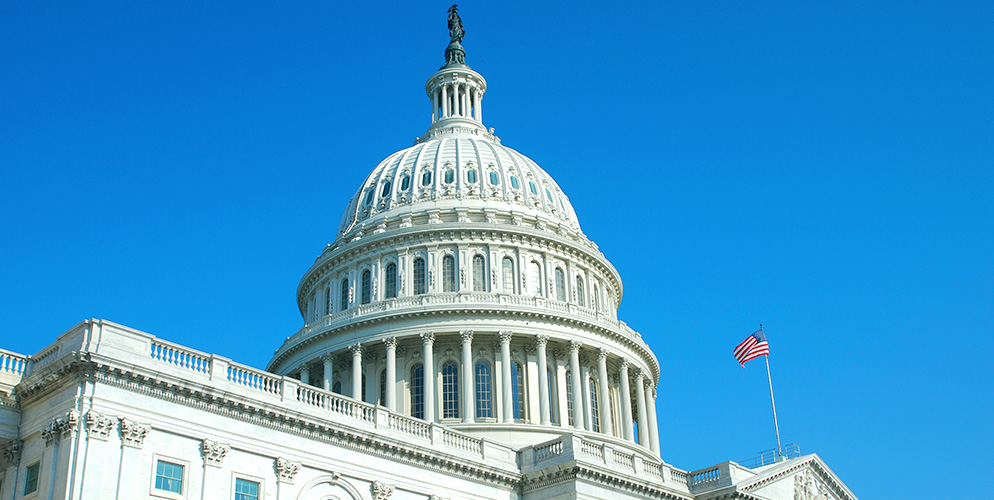The 119th Congress’s “Big Beautiful Bill” was recently passed and signed by President Trump – but what does it mean for your financial strategy? Below are a few ways the bill could alter how you save for the future and the tax implications it holds.

State and Local Tax Deduction (SALT) Increase:
- The cap on state and local tax deduction will be raised from $10,000 to $40,000 and will increase by 1% through 2029 – the cap will revert to $10,000 in 2030.
- The benefit begins to phased out for those making an income of more than $500,000.
Social Security:
- There are no changes on the taxation of social security benefits, however there is a temporary tax deduction of $6,000 for seniors 65 and older, and $12,000 for couples filing jointly if both individuals are age 65-plus.
- This tax break is available to those with an adjusted gross income of $75,000 or less, and $150,000 for couples filing jointly. The deduction is set to expire at the end of 2028.
- Beneficiaries can claim the temporary deduction to lower federal income tax. The deduction applies to all of an individual’s income rather than only social security benefits.
- The tax cut is phased out for individuals making $175,000 and for couples making $250,000.
Clean Energy Tax Credits:
- The bill ends the $7,500 tax credit for households that buy or lease a new electric vehicle, as well as the $4,000 tax credit for buyers of used electric vehicles. The tax credits expire after September 30, 2025.
- The bill also ends tax breaks for individuals who make their homes more energy-efficient after December 31, 2025.
Estate and Gift Tax Exemption:
- This tax exemption is raised from $13.99 million to $15 million for individuals, and from $27.98 million to $30 million for those married and filing jointly in 2026.
Standard Deduction:
- Standard deduction is raised from $15,000 to $15,750 for individuals, and from $30,000 to $31,500 for those married and filing jointly in 2025.
Child Savings Accounts:
- Newly introduced tax-advantaged savings accounts, dubbed “Trump accounts”, will be available to children who are U.S. citizens.
- The accounts will have a one-time deposit of $1,000 from the federal government for those born from 2025-2028.
- Parents would be able to contribute up to $5,000 per year, and the balance would be invested in a diversified fund that tracks a U.S. stock index and grows tax-deferred. Qualified withdrawals are taxed as long-term capital gains.
- Employers can also contribute up to $2,500 to an employee’s account, which would not be counted as income to the recipient.
Child Tax Credit:
- The maximum credit is raised from $2000 to $2,200 per child, with a refundable portion staying at $1,700.
Overtime Limits:
- Individuals can deduct up to $12,500 for overtime, which is set to expire in 2028.
- Married couples filing jointly can deduct up to $25,000 for both tips and overtime.
Tip Tax Deductions:
- A temporary federal income tax of up to $25,000 can be applied to qualified tip income until 2028.
- This tax break would apply to workers who receive cash tips and report them to their employer for payroll tax withholdings.
- The tax break does not apply to individual taxpayers whose income exceeds $150,000, or $300,000 for joint filers.
With the signing of the Big Beautiful Bill, several key tax and savings changes could significantly affect how you plan for the future. Whether you’re adjusting your income strategy, planning for retirement, or saving for your children, now is the time to review your financial plan and assess what the changes mean for you.
Reach out to an Oppenheimer Financial Professional today to learn more about how the bill could affect your tax planning strategy.
DISCLOSURE
Sources:
- $1,000 Tax-Free Baby Bonus: How Trump’s New Account Works (2025) – Forbes Advisor
- What Trump’s 'one big beautiful bill' means for your money
- 2025 Tax Legislation Update: One Big Beautiful Bill Act Narrowly Passes Senate | Insights | Ropes & Gray LLP
The information set forth herein has been derived from sources believed to be reliable but is not guaranteed as to accuracy and does not purport to be a complete analysis of any security, company, or industry involved. Opinions expressed herein are subject to change without notice. Oppenheimer & Co. Inc. does not provide legal or tax advice.
This material is not a recommendation as defined in Regulation Best Interest adopted by the Securities and Exchange Commission. It is provided to you after you have received Form CRS, Regulation Best Interest disclosure and other materials.
Oppenheimer & Co. Inc. Transacts Business on all Principal Exchanges and Member SIPC 8148867.1

